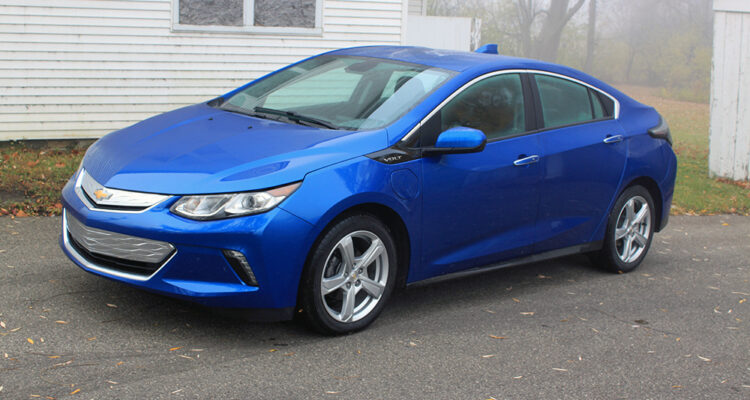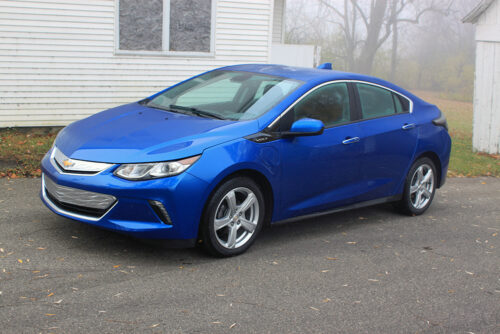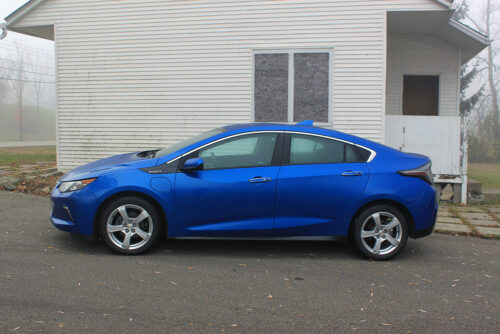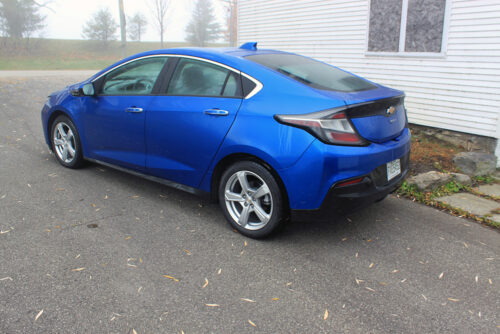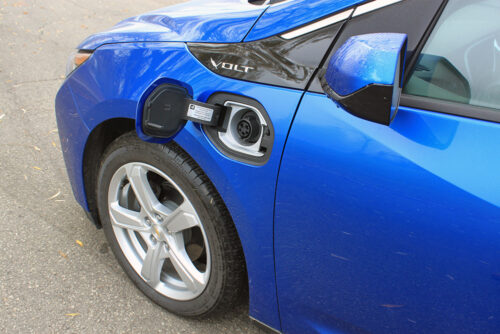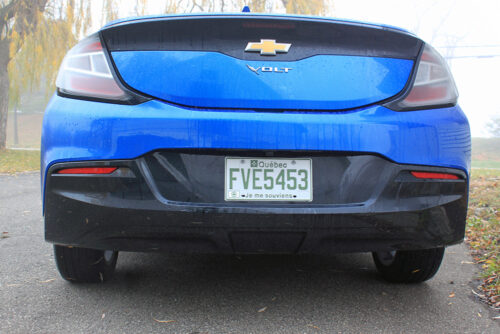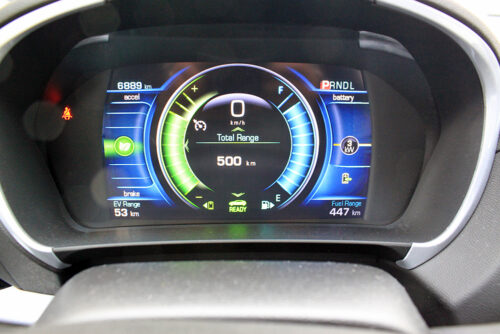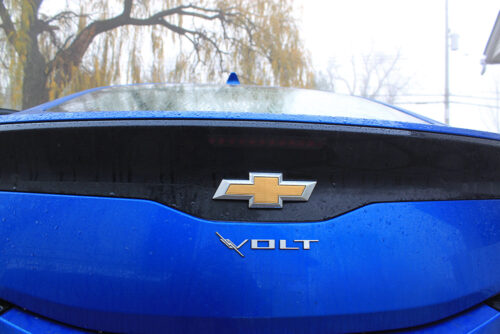So, what is it? An electric vehicle with a range extender or a plug-in hybrid?
That’s a discussion that has been going on since the Volt was first introduced. Officially, GM calls it “an electric vehicle with a backup plan,” while others refer to it as a hybrid sedan.
The debate about what the 2017 Chevrolet Volt will rage on, but there’s no denying the fact the Volt is a pretty nice vehicle to drive. And I couldn’t help but smile when, as gas prices surged in my area on cue Thursday evening, I knew I wouldn’t have to make that pit stop. That’s because I never really had to use the Volt’s backup plan – the 1.5-litre onboard generator. In fact, the only time the generator kicked in for me was when I hit the ignition button on a particularly cold morning.
With a range of up to 85 kilometres on a fully charged 18.4 kWh battery, the Volt is definitely capable of handling the day-to-day duties of a family car without any need for the generator. City driving also results in power regeneration thanks to regenerative braking on all four wheels. On longer trips or intercity jaunts, there won’t be any range anxiety thanks to the range extender. It provides several hundred kilometres of additional travel before you need to top up the fuel tank.
The Volt has two electric motors that provide propulsion – even when the generator kicks in because all that does is provide electricity for the motors – and there is no gear shifting thanks to the one-speed direct drive transmission.
And while the horsepower number on the Volt may seem modest at 149 horsepower, it’s the 294 lb-ft of torque that’s the real story. Torque is, after all, what makes accelerating fun and the Volt has both of those things in spades.
When you are done having fun with the Volt, it’s time to recharge those batteries. In our tester, I was forced to use the 120-volt cable that plugs into a regular power outlet. That is definitely the slow way to charge with a time of about 13 hours if your battery is drained. Volt owners should probably invest in a 240-volt charging system, with cuts the time needed down to about 4.5 hours, according to GM. For regions that have different electricity rates for peak and off-peak hours, the Volt has a setting that will allow you to program the vehicle so it only charges during off-peak times.

A complaint I often hear about EVs is their higher initial price, but most Canadians live in provinces that offer incentives when buying green vehicles. And there are rumours that a similar federal incentive could be in the works. That significantly reduces the upfront cost for an electric or even hybrid vehicle.
The Volt is now in its second generation and was redesigned for the 2016 model year. The new looks is very attractive, with a dual level front fascia with silver accents that really stand out — especially on the Kinetic Blue Metallic colour on our tester. The rear design appears to have been softened, with larger taillights and more rounded edges. Unlike some other EVs or hybrids out there, the Volt looks just like a normal car. And that’s fine by me.
Inside, drivers will find a cabin that is fairly similar to what one expects from traditional vehicles, with one major exception. The gauge cluster is replaced with a single digital display that is bright, colourful and easy to comprehend. The large infotainment screen also dominates the landscape. There is, however, a fair amount of cheap-feeling plastic, which dulls the interior experience a bit, and there was a sea of black materials in our tester.
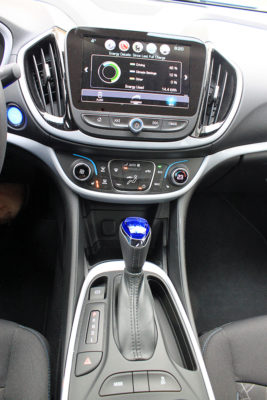
One issue for the Volt is seating capacity. GM lists it as a five-seater, but really, there’s room for four comfortably. If you really must have a fifth passenger, he or she should be a contortionist because of there is a console between the front and back seats that is smack dab in the middle of the back foot well.
And about that infotainment system, it doubles as a display for the vehicle’s status and charging situation. And with the projection feature, your smartphone’s apps can be used through the system, which is a feature that is becoming more and more prevalent.
The Volt’s 8-inch MyLink system also offers 4G LTE WiFi connectivity through OnStar. And the whole thing is nice to operate, with no delay between your finger’s command and the appropriate action. However, you will have to take your gloves off in winter or it won’t recognize your touch – at least it didn’t for the leather gloves I was wearing.
Driving the Volt is, quite honestly, just like driving any traditional gasoline car you have experience with, without the hassle of regular pump visits. There are a few things to get used to, like the lack of sound and, more importantly, the feel of the regenerative braking.
Whatever you want to call it — an EV of hybrid — there’s no denying that the Volt is a look into the automotive future.
2017 Chevrolet Volt
Price as tested: $40,545
Freight: $1,600
Configuration: front engine/front-wheel drive
Engine/transmission: Two electric motors and a 1.5-litre inline four-cylinder generator / 1-speed direct drive
Power/torque: 149 horsepower/ 294 lb-ft
Fuel (capacity): regular (34 L)
Combined fuel economy ratings (L/100 km): 2.2 L/100 km (electric), 5.6 L/100 km (gasoline)
Observed fuel economy (L/100 km): N/A
Warranties: 3-years/60,000 km (basic) / 8-years/160,000 km (battery)
Competitors: Nissan Leaf, Toyota Prius
Related links:



